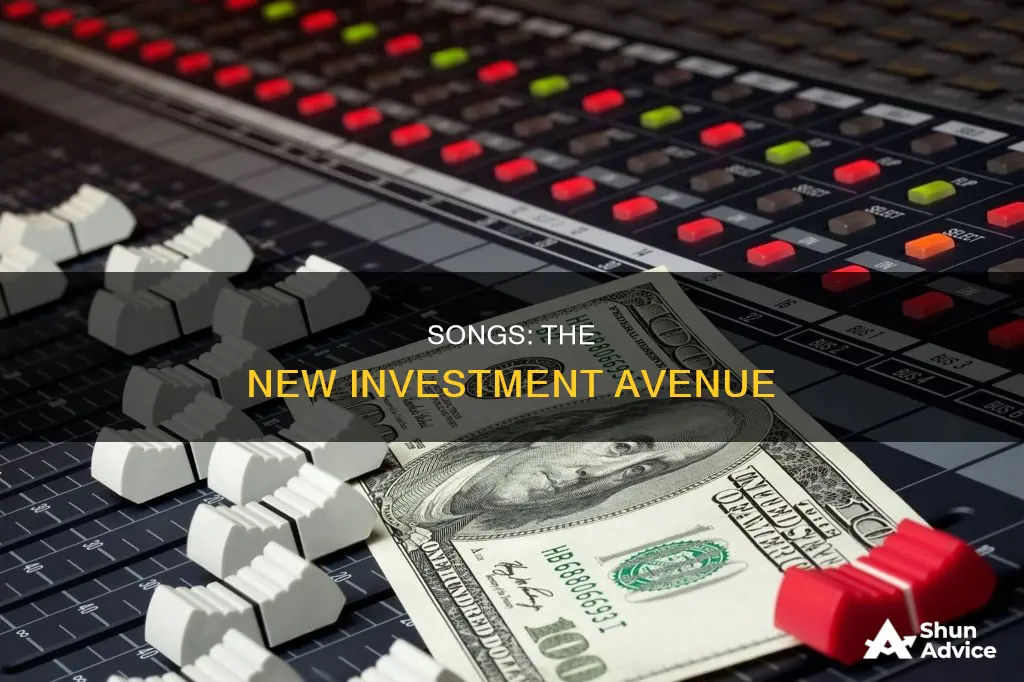
Investing in music has become an increasingly popular alternative investment strategy. Music royalties can be a very good investment because of the potential to earn a significant amount of money. The potential for profit is what draws most people into the business. Music royalties tend to have a higher yield than traditional treasuries. They are also not correlated to other asset classes, meaning that they continue to be generated, collected, and paid out regardless of macroeconomic conditions.
The rise of streaming services such as Spotify, Apple Music, and YouTube has made it easier for artists to monetise their music and for investors to access the music royalty marketplace. Streaming revenue is projected to grow from $3.5 billion to around $28 billion in just over a decade, fuelled by the rise in international smartphone usage and the growth in connected devices.
There are several ways to invest in music. One way is to purchase shares of music royalties from your favourite songs and artists. Another way is through equity crowdfunding, where investors fund artists in exchange for a share of future revenues.
What You'll Learn
- Music streaming is growing, and people are investing massive amounts in music royalty marketplaces
- Music royalties are an alternative investment class that is not correlated to other asset classes
- Streaming giants like Spotify, Tidal and Apple have improved user experience and driven the music market's growth
- Music publishing has proven to be resilient, despite the bumpy ride that technology has afforded it
- Investors can buy at a lower price and bet on a relatively unknown artist or buy equity in established artists

Music streaming is growing, and people are investing massive amounts in music royalty marketplaces
Music streaming has been experiencing a period of rapid growth, with streaming now representing 65% of the global revenue share in the music industry. This growth is being augmented by the increasing global smartphone penetration, with streaming giants like Spotify, Tidal, and Apple leading the way. As a result, the music industry is projected to almost double its revenue by 2030, reaching over $100 billion.
This growth in streaming has also brought greater stability to music royalty cash flows. The income from streaming has helped offset the decline in income from other formats such as downloads and physical sales. As a result, music royalties are now seen as an attractive asset class for investors, offering stable and predictable cash flows with low correlation to macroeconomic performance.
The stability of streaming, combined with the increasing demand for music streaming services, has led to an influx of investments in music royalties. Music royalty investments provide access to a growing alternative asset class with long-term royalty streams. Large companies like Hipgnosis, Sony, and Primary Wave have been acquiring music catalogs for significant sums. For example, Justin Timberlake sold the rights to his song catalog to Hipgnosis Songs Capital for $100 million, while Bruce Springsteen sold his music rights to Sony Music Group for over $500 million.
Additionally, the development of online royalty marketplaces, such as Royalty Exchange and SongVest, has made it easier for individual investors to purchase music royalties directly. These platforms allow investors to buy shares in royalty catalogs or individual songs, providing an opportunity to invest in a diverse range of music with different risk profiles.
Overall, the growth in music streaming has created a thriving environment for investments in music royalty marketplaces, with investors seeking to capitalize on the stable and predictable cash flows generated by the music industry.
Bankers: Bad Apples or Bad Barrel?
You may want to see also

Music royalties are an alternative investment class that is not correlated to other asset classes
One of the key advantages of investing in music royalties is their low correlation with macroeconomic performance. Music spending and royalty income have historically shown little correlation with broader economic activity and broader spending activity. This means that investing in music royalties can provide a hedge against economic downturns and market volatility.
Another benefit of music royalties as an investment class is the potential for high income and attractive yields. Music royalties often have higher yields compared to traditional investments such as treasuries, stocks, or bonds. For example, as of September 2020, the US 10-year treasury yield was 0.7%, while the S&P 500 dividend yield was 1.8%. In comparison, music royalty investments can offer yields of 4-9% or even higher.
The stability and recurring nature of music royalty income also make it an attractive investment option. Streaming has brought greater stability to music royalty cash flows, with income remaining relatively stable after the initial release period of a song. Additionally, music royalty income is collected by different distributors and paid periodically to rights holders, providing a source of predictable and recurring revenue for investors.
Investing in music royalties also provides diversification benefits to an investment portfolio. Music royalties are not correlated to other asset classes, so they can help reduce overall portfolio risk. Investing in a diverse range of songs, artists, genres, and vintages can further enhance the diversification benefits and protect against shifting consumer preferences.
Overall, music royalties offer a unique set of characteristics that make them an attractive alternative investment class. Their low correlation to other asset classes, high income potential, stability, and diversification benefits make them a compelling option for investors seeking to enhance their investment portfolios.
Military Personnel: Investing for the Future
You may want to see also

Streaming giants like Spotify, Tidal and Apple have improved user experience and driven the music market's growth
Streaming platforms like Spotify, Tidal, and Apple have become increasingly popular, improving user experience and driving the growth of the music market. With Spotify taking the lead, these platforms have revolutionized the music industry, offering on-demand access to vast music libraries at a low cost. This shift has been accelerated by the global adoption of smartphones and smart devices, making streaming convenient and accessible.
Spotify, with its freemium model, has over 100 million paying users, showcasing consumers' willingness to pay for music. The streaming giant has continuously added subscribers, currently holding 30-31% of the market share with 180 million subscribers. However, its dominance is slowly decreasing, with competitors like Amazon Music and YouTube Music gaining ground.
Tidal, founded by Jay-Z, targets consumers seeking high-quality audio and has introduced direct-artist payouts, aiming to make streaming more profitable for artists. While Tidal holds less than 2% of the global market share, its focus on artist-friendly policies is noteworthy.
The success of these streaming platforms is attributed to their ability to provide an enhanced user experience. They offer streamlined access to extensive music catalogs, catering to diverse preferences. This growth is further augmented by the increasing penetration of smartphones and smart devices worldwide.
The music market is projected to almost double in revenue by 2030, reaching over $100 billion. Streaming's contribution to this growth is significant, currently accounting for 84% of the US music industry's revenue and 67% worldwide. The convenience, affordability, and vast libraries offered by streaming platforms have driven this shift in music consumption.
Overall, streaming giants like Spotify, Tidal, and Apple have played a pivotal role in improving user experience and driving the music market's growth, reshaping the industry and creating new opportunities for artists and consumers alike.
Why Early College Programs Are Worth the Investment
You may want to see also

Music publishing has proven to be resilient, despite the bumpy ride that technology has afforded it
The arrival of streaming giants like Spotify, Tidal, and Apple has contributed to the growth of the music industry. These companies have provided streamlined access to an extensive content library of songs at a low, inclusive price point. As a result, Spotify has now passed 100 million paying users, indicating that consumers are willing to pay for music. The long-term outlook for the music market is positive, with streaming growing at a double-digit pace. Research from the IFPI predicts that music revenues could almost double by 2030 to over $100 billion.
The rise of streaming has also attracted investors to music publishing. They view music royalties as a form of capital that provides recurring revenues. By purchasing the rights to entire music catalogues, investors can secure a predictable cash flow based on royalties from previous years. This passive and consistent revenue stream requires limited administrative overhead, as 80-90% of modern music rights do not need active management.
Additionally, strong copyright laws protect the continuity and sustainability of music as an asset. While distribution channels and strategies may change, rights holders always come out on top. The inclusion of music in film, TV, theatre, and advertising only drives growth. Strategic bundles that provide untethered access to multiple distributors tend to increase usage and reduce subscription churn.
Music publishing has demonstrated its resilience by adapting to technological advancements and leveraging the opportunities presented by streaming and digital platforms. As a result, it has found a model that works for consumers, artists, and businesses alike.
Investments: Where People Put Their Money
You may want to see also

Investors can buy at a lower price and bet on a relatively unknown artist or buy equity in established artists
Investing in music royalties is an attractive prospect for investors, with the potential for high yields and a steady passive income stream. There are several ways to invest in music, from buying shares in songs or catalogues to investing in music royalty funds.
When it comes to investing in individual songs or catalogues, investors have the option to buy at a lower price and bet on a relatively unknown artist or buy equity in established artists. This decision depends on the investor's risk appetite and investment goals. By investing in a relatively unknown artist, investors are taking on more risk, but they can potentially see a higher payoff down the line if the artist becomes successful. On the other hand, investing in established artists may provide a more stable and predictable income stream, as these artists already have a track record of success.
For example, investors can purchase shares in individual songs through platforms like Royalty Exchange (RE) or SongVest. These platforms allow investors to bid on slices of songs or catalogues, with the most common commodity being a part of a royalty stream. Investors can also invest in music royalty funds, such as those offered by Hipgnosis Songs Fund, HarbourView Equity, and Round Hill Music Fund Limited. These funds provide access to a diversified portfolio of music assets, including songs from both up-and-coming and established artists.
Another option for investors is to participate in "equity crowdfunding", where fans collectively advance money to artists in exchange for a share of future revenues. Platforms like Corite, Songbook, and Global Rockstar enable artists to raise funds by selling a portion of their future streaming royalties to fans. This model allows fans to become true stakeholders in the artist's success and provides a new way for artists to finance their music careers without being tied to a traditional record label.
Overall, investing in music offers a unique opportunity for investors to diversify their portfolios, generate attractive returns, and bet on the success of their favourite artists.
Small Investments, Big Returns
You may want to see also
Frequently asked questions
You can buy shares of songs or catalogues of songs on websites like Royalty Exchange, SongVest, and Sonomo.
Music is a growing asset class, and investing in songs can provide access to a growing, alternative asset class with long-term royalty streams. Songs are also uncorrelated to the stock market, which can be favourable for investors.
As with any investment, there are risks involved in investing in songs. The popularity of a song can be unpredictable, and there is a chance that a song may not generate the expected royalties.
Royalties can come from a variety of sources, including performance royalties (e.g. radio broadcast), mechanical royalties (from the reproduction of copyrighted works), print (e.g. sheet music), sync licensing (when a song is used in film or TV), and non-interactive digital performance (e.g. SiriusXM).
Some notable examples of successful song investments include the rights to Jay-Z and Alicia Keys' "Empire State of Mind" and Dirty Dancing's "(I've Had) The Time of My Life", which have generated significant royalties for their owners.







